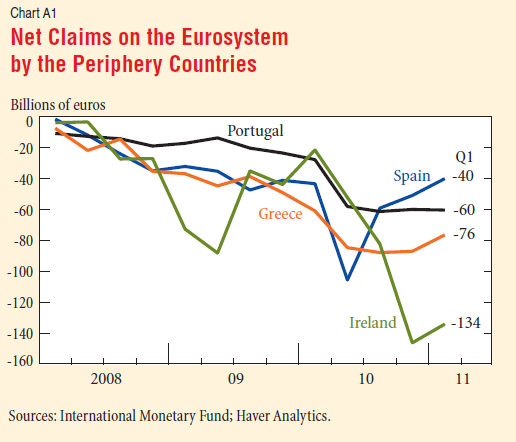There’s a new article from the Federal Reserve Bank of New York – Saving Imbalances and the Euro Area Sovereign Debt Crisis by Matthew Higgins and Thomas Klitgaard.
The abstract
For several years prior to 2010, countries in the euro area periphery engaged in heavy borrowing from foreign private investors, allowing domestic spending to outpace incomes. Now these countries face debt crises reflecting a loss of investor confidence in the sustainability of their finances. The result has been an abrupt halt in private foreign lending to these economies. This study explains how the periphery countries became dependent on foreign borrowing and considers the challenges they face reigniting growth while adjusting to greatly reduced access to foreign capital.
which is almost right.
The Euro Zone nations have run massive current account deficits and foreigners allowed this game to go on. The deficit nations became more and more indebted to the rest of the Euro Zone. This process can go on as long as foreigners allow it but with rising negative net asset position relative to gdp, the processes have to stop somewhere leading to a collapse in demand.
The authors point out how yields on government bonds of various nations were close to each other before crisis hit. This is consistent with Wynne Godley’s stand that there is no signal that something is wrong or can go wrong when unsustainable processes are building up, until something goes awfully wrong.
The article also has a section on the TARGET2 payment and settlement system. TARGET2 flows is one of my favourite topic. I will write about it sometime in the same spirit as my previous post on domestic payments.
The article however puts the blame on deficit countries which is inaccurate from a Post-Keynesian perspective. The problem was with the design of the Euro Zone itself. The problem was also the ideology that “market forces” work to achieve results which is best for everyone.
There are some behavioural hypothesis/assumptions used in the article which are not quite right, but I won’t go into them.
There are some interesting charts in the article, for example
